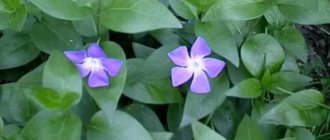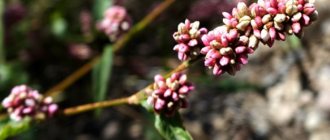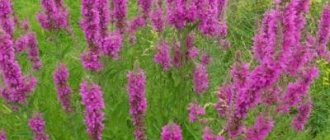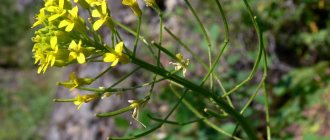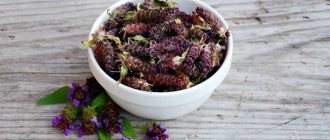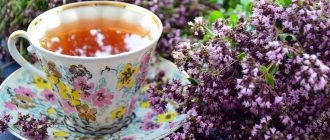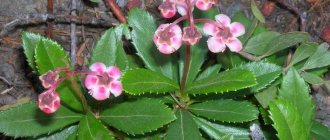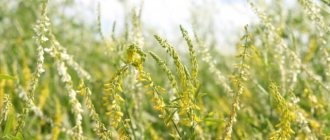What does a burnet look like?
The hemorrhagic medicinal plant not only has an unusual appearance, but also has a set of useful healing properties.
Hemophilia decoctions and tinctures are used as an antiviral or antibacterial agent to treat skin diseases and gastrointestinal tract diseases and much more. Not everyone knows what hemorrhage looks like, given that this plant is wild and not suitable for growing in the garden. Meanwhile, the perennial plant is an ornamental plant and some of its varieties can compete in beauty with famous flowers that have long won pride of place in the garden.
It is a herbaceous plant with a thick, woody horizontal rhizome up to 12 cm long. Many fine roots, about 20 cm long, emerge from the central root. The stem is straight, single, slightly ribbed, hollow inside, branched at the top, and can reach from 60 to 120 cm in height.
According to the description of the burnet, its basal leaves are collected in a rosette, the size is large and petiolate, pinnately complex. The leaves are glabrous, ovate, with a jagged edge, heart-shaped at the base on short petioles. The stem has approximately 1-3 leaves, from bottom to top in size. The shades of the leaves can be different: light and dark green, bluish, yellow, orange, rarely pinkish, depending on the type and variety of the crop.
Inflorescences on long peduncles are classified as capitative, short-cylindrical or spherical. Burnet flowers are small, with one leaf and two scales, the upper pistil, the lower bisexual. The perianth is simple, of four purple leaves drooping outward. The first flowering can be expected in the second, sometimes third year after planting.
The hypanthium is ribbed and pubescent. The fruit is dry, nutty. Blooms in June - July, bears fruit in August.
This crop is a real boon for gardeners because it tolerates low temperatures without shelter, does not cover large areas, suppresses other plants, and grows successfully in one place without replanting for 10 years. Not susceptible to diseases and pests. In other words, it will require minimal care and attention.
Compound
The richness of the biological and chemical composition of the plant ensures its widespread use in recipes of traditional healers. A significant concentration of tannins from the group of pyrogallols (tannins) provides a pronounced anti-inflammatory and astringent property.
The maximum concentration of tannins (from 23 to 25%) is contained in the trunk in flowing growths in the root area, from 15 to 17% in root shoots, in the thick rhizome - only 12 - 13% of the substance. In addition, the root system of the plant is rich in steroids, saponins and organic acids. The inflorescences and leaf crowns of Hemophilia contain significant amounts of ascorbic acid and flavonoids (kaempferol and quercetin).
The supply of nutrients in a plant may vary depending on natural areas and conditions. Even poor soil provokes the growth of burnet, enriching the plant with useful substances.
Harvesting
Rhizomes and roots of hemophilia are used as medicinal raw materials. Harvesting takes place during the fruiting period. The optimal period is when the seed pods have already formed in place of the flowers. But not completely dry. Harvest time is at the end of August - September. The burnet root is completely dug up, including the main rhizome and small roots. Tributaries are not cut off.
The raw materials are cleared of soil, washed with cold water, and the elements of the above-ground part of the plant are removed. Then the roots are cut into pieces no more than fifteen centimeters long. They are left outdoors for several hours. Then the raw materials are dried until ready in the open sun in dry and hot weather. But if the weather is humid, they are put away in attics, where they are scattered on paper or burlap in a single layer.
You can also dry the rhizome in the oven, setting the temperature to no more than forty degrees. But it is important to cover metal baking sheets with parchment paper. This is done in order to avoid contact of raw materials with iron, since the medicinal root turns black from such contact.
The raw material can be used for five years, as it retains its healing properties. But it is important to provide it with the correct storage conditions. Of course, a dry place without access to light is suitable for this. The roots are placed in paper bags or wooden boxes. The herbaceous part is not used for medicinal purposes, but is consumed fresh and added to salads and soups.
Procurement, collection, storage
Burnet grows in Europe, Siberia, East and Central Asia, and the Far East. Found in North America. Prefers shrubs, banks of water bodies, forest edges and clearings, meadows, cliffs.
Before harvesting the roots of redhead yourself, you need to take into account that in some Russian regions (for example, Ivanovo, Vologda, Kostroma) this plant is included in the regional Red Books.
The optimal time for digging up rhizomes is from the last ten days of August to the end of September.
Clean the raw materials from particles of earth and rinse thoroughly in a large volume of water. Cut into pieces up to 150 mm long and dry for eight hours in the sun. Why scatter it in one layer onto horizontal planes covered with thick paper in the attic, veranda or barn.
Article for you:
Medicinal properties of rose hip root and its use in folk medicine
You can use the oven at 40 degrees for drying, ensuring the door is slightly open. An electric dryer is also used in the same mode. High-quality dried bloodsucker roots in cardboard boxes or wooden containers in a dry, ventilated room without lighting are stored for up to 5 years.
What diseases does the burnet cope with?
The plant is used to normalize the functioning of the entire gastrointestinal tract system. The composition of organic acids in hemophilia contributes to the functionality of fat metabolism and acid-base balance.
The content of starch and sterols significantly reduces cholesterol levels and normalizes the functioning of the cardiovascular system. Also, these substances enhance insulin secretion and the work of intestinal bacteria in the synthesis of B vitamins.
The content of saponins in the plant contributes to:
- liquefaction and removal of mucous formations from the bronchopulmonary system;
- inhibition of the connection of macromolecules (DNA) into malignant tumors;
- increasing hormonal activity;
- normalizing water-salt balance and removing toxic substances;
- normalization of blood pressure.
Essential oils found in the rhizome of the plant enhance the bactericidal and antispasmodic properties of drugs against hemoptysis, and also have a calming effect on the human nervous system.
Composition of burnet
Chemical composition:
- Tannins. They heal the digestive system: improve the processes of food digestion, normalize the functioning of the gastrointestinal tract. They relieve inflammation and have bactericidal properties.
- Organic acids. They promote digestion by secreting gastric juice, break down fats, and prevent the development of harmful bacteria.
- Starch. It has an enveloping effect, relieves various inflammations of the gastrointestinal tract. Normalizes cholesterol.
- Sterols. They reduce the amount of “bad” cholesterol, heal the heart muscle, and strengthen the immune system.
- Vitamin C. Protects and normalizes the immune system, resists viruses and microorganisms.
- Macro- and microelements: potassium, calcium, magnesium, iron, zinc, selenium, iodine, etc. They have a positive effect on the body, strengthen the heart and blood vessels, improve the performance of other systems, remove harmful elements, and relieve inflammation.
- Carotene. Increases defenses and slows down the body's aging process. Helps normalize metabolism.
- Essential oil. Fights bacteria, spasms, relieves inflammation, and has a calming effect.
Benefits of burnet
The Latin name for this plant, Sanguisorba, translates to “absorb blood.” But the benefits of burnet do not end there. No wonder the pharmacologist of the Chinese Ming dynasty argued that the value of burnet is equivalent to a pearl.
The ancient Greeks, who used the plant to stop bleeding, knew about the benefits of this plant. Here are a few facts about the beneficial properties of burnet known to modern researchers.
Antibacterial and antiviral agent
Information that burnet helps overcome the plague came to modern researchers from the ancient chronicles of eastern herbalists. Modern laboratory experiments have confirmed the effect of this treatment: the beneficial substances contained in the juice of this herb actually destroy the virus.
In addition, scientific studies have confirmed that hemophilus extract inhibits the activity of pathogenic bacteria, including Staphylococcus aureus, pneumococcus, and Pseudomonas aeruginosa.
Antioxidant properties
Burnet leaves and stems are an excellent source of flavonoids, including quercetin, gallic acid, kaempferol and rutin, which have antioxidant properties that can neutralize free radicals, thereby preventing cancer.
Cure for rheumatism
Hemophilus has been scientifically proven to be an effective herbal remedy for the treatment of rheumatism. Infusions from this herb relieve pain and normalize the general condition of patients with rheumatism.
Benefits for bleeding
The Latin name of this plant suggests that hemophilus has the ability to stop bleeding. Interestingly, drinking herbal tea from this plant can help stop external bleeding and prevent internal hemorrhage.
Reduces cholesterol levels
Saponins, tannins, ellagitannins and glycosides, working together, effectively reduce cholesterol levels. It must be said that all these substances are contained in sufficient quantities in the green part of the burnet. In addition, the grass juice contains beta-sitosterol, which can also improve the blood count.
Treats skin diseases
Burns of various origins, rashes, eczema, and poorly healing wounds respond well to preparations containing burnet extracts. By the way, for burns, it is recommended to mix a teaspoon of crushed root powder with sesame oil. The resulting suspension is applied to the affected areas.
Gastrointestinal protection
Thanks to its astringent and anti-inflammatory effect, the medicinal plant is a good cure for gastrointestinal disorders, gastritis, ulcers, ulcerative colitis, diarrhea, irritable bowel syndrome, and enteritis.
Instructions for use
To prepare the infusion, pour 1 tablespoon of the herb into a glass of boiling water and then heat for 30 minutes. Without waiting for the liquid to cool, it is filtered and strained from the rest of the herb. After this, the volume of liquid increases to 200 ml. The resulting mixture is divided into 4 parts. It is recommended to shake the solution before use. Store in the refrigerator for no more than 2 days.
For chronic dysentery, prepare a 10% decoction of burnet. Children under one year of age are advised to take no more than 200 g of the product per day. Patients over 1 year of age should consume 300-400 g of decoction per day. For gastrogenic toxic diarrhea, children are given a tablespoon of medicinal broth every 2 hours until signs of improvement appear. If an allergy occurs upon contact with the prepared medicine, you should stop taking it.
Against skin inflammation
Burnet has beneficial properties and contraindications that are known to dermatologists. It is noteworthy that this plant has found its use in the treatment of skin diseases:
- wounds, abrasions;
- bruises
- bedsores;
- burns;
- allergic rash, dermatitis;
- eczema.
When treating bruises, contusions, small abrasions, make a poultice: 3 tablespoons of the plant are scalded with hot water, wrapped in any sterile cloth and the resulting compress is applied to the problem area.
When treating bedsores, rotting wounds, and weeping eczema, it is recommended to wash them with a decoction of burnet, prepared from 2 tbsp. l crushed roots and 500 ml of boiling water.
An infusion for topical use prepared according to the following recipe will help in the treatment of allergic rashes: pour 400 ml of hot water into 3 tbsp. spoon of rhizome, which should be boiled for 30 minutes, then left for at least 2 hours, strain.
To treat burned skin, it is recommended to mix 1 tsp. ground roots with sesame oil. The resulting suspension is applied to the affected areas.
Application in gynecology
Burnet is used to solve the following gynecological problems:
- menstruation with large blood loss;
- hemorrhage in the uterus;
- during postoperative intervention (abortion); cervical erosion;
- fibroids;
- inflammation of the ovaries and appendages.
The therapeutic effect is achieved due to the herb’s ability to prevent blood loss, constrict blood vessels and contract muscle tissue, have a bactericidal effect and relieve inflammation.
Application of the plant:
- Infusion for bleeding. 1 tbsp. l. l collection of herbs burnet (rhizomes), shepherd's purse, plantain, snakeweed (root part), licorice, rose hips, taken in equal volumes, pour 2 tbsp. hot water. Leave in a thermos for 12 hours. Strain. Therapy: 0.25 tbsp. 5 rubles / day, 60 days.
- Douching for blood loss and inflammation. A glass of boiling water and 1 tbsp. l of crushed roots are brought to a boil for 3 minutes, wrapped and left to brew for 30 minutes. Filter douching is done with a warm solution 2 times a day.
- Decoction for fibroids. A glass of hot water is poured into the collection of burnet and pine queen (1 tablespoon each). Cook for 30 minutes. Filter. Therapy: 10 ml 3 times / day, up to 2 months. Douching for fibroids. 3 tbsp. l. collection of herbs for hemorrhage (rhizomes, 1 tbsp), boron uterus (1 tbsp), wormwood (0.5 tbsp), incense (root part, 0.5 tbsp), oak and aspen hull (1 tbsp) pour 1 liter of liquid and boil for 20 minutes. Leave for 6 hours, strain. Take 2 times / day. Do not use the decoction during menstruation and the week before.
Infusion for pancreatitis
The use of burnet rhizomes is important for pancreatitis. To treat this disease, the plant is mixed with mustard and Elecampane.
Ingredients:
- Bloody bread - 3 g.
- Knotweed - 5 g.
- Elecampane - 10 g.
- Boiling water - 500 ml.
How to cook: pour boiling water over the raw material, leave for 2 hours in a warm place. Strain before use.
How to use: take 250 ml 30 minutes before meals.
Result: Burnet for pancreatitis relieves inflammation and improves the functioning of the pancreas.
Decoction against diarrhea
Burnet for diarrhea in adults is taken in the form of a decoction.
Ingredients:
- Hemophilia roots - 1 tablespoon.
- Boiling water - 1 glass.
How to prepare: pour boiling water over the roots of the plant, put on low heat, bring to a boil and cook for 40 minutes. Strain before use.
How to take: drink burnet decoction for diarrhea, 1 tablespoon 5-6 times a day, diluted in 50 ml of water.
Take the drink before meals. During treatment, follow a gentle diet, avoid eating fatty and spicy foods, raw vegetables and fruits. Since diarrhea causes dehydration, drink more water - at least 30 ml per 1 kg of body weight. If you suffer from kidney or cardiovascular disease, drink water without exceeding this dose.
Result: the decoction normalizes the activity of the stomach and intestines.
Decoction for colitis
Burnet helps with colitis. To cure this disease, prepare a decoction.
Ingredients:
- Hemophilia roots - 1 tablespoon.
- Boiling water - 1 glass.
How to prepare: pour boiling water over the raw materials. Place over low heat, bring to a boil and cook for 30 minutes. Infuse the prepared broth for 2 hours.
How to use: Take 1 tablespoon up to 5 times a day.
Result: intestinal colic is reduced, spasm is relieved.
Against intestinal infections
The beneficial properties of burnet allow you to treat various intestinal infections; also do not forget about contraindications so as not to aggravate the course of the disease.
The plant is characterized by the ability to restore microflora and improve digestion processes, so it is suitable for combating dysbacteriosis that has arisen while taking antibiotics:
15 g of hemoptysis rhizomes are poured into 200 ml of hot water and heated over low heat for 20 minutes. Turn off the stove and leave the drink to simmer for about 1 hour. Strain. Take a decoction of 10 ml up to 6 times a day.
The following recipe will help cleanse the body and restore microflora during dysentery:
- a glass of hot water is poured 1 tbsp. l. root part, heat the broth for at least 30 minutes, cool and strain. Use 1 tbsp. every 2 hours.
For intestinal flu, decoction of 3 tbsp. l roots and 3 tbsp. l. water. The raw material is poured with liquid, heated over low heat for 30 minutes, and filtered. Therapy: the resulting volume is drunk throughout the day. Tea made from the rhizomes of the herb is characterized by astringent and bactericidal properties. Recommended for use in various intestinal disorders:
250 ml of liquid is steamed with 2 tsp. raw materials and leave for 10 minutes. Filter the drink and take 2 tbsp. l. in a day.
For fibroids
Due to the content of carotene, copper, selenium and boron, burnet has antitumor properties, helping to stop the development of cancer. Helps improve well-being and mitigate the effects of chemotherapy.
For uterine fibroids, a different set of plants and herbs is used: “pine uterus”: 2 tbsp. spoons pour half a liter of boiling water and leave until cool. Take 1 tbsp. spoon 3-4 times a day until complete recovery.
For douching and external use, prepare a decoction of plants by mixing 1 tbsp. spoon:
- roots and rhizomes of hemophilia;
- pine queen;
- Oak bark;
- aspen bark.
- Also add 0.5 tbsp. l. frankincense and wormwood roots. For 1 liter of boiling water add 3 tbsp. l. spoons of herbal mixture and cook for 20 - 30 minutes. Leave for 6 - 8 hours and strain thoroughly. The douching procedure is carried out in the morning and evening every day for one and a half weeks.
For ulcers
In case of peptic ulcer, burnet infusion is used. At the same time, its properties are manifested:
- elimination of the inflammatory process in the affected area;
- production of enzymes to improve food absorption;
- enveloping effect on the mucous membrane of the stomach or duodenum;
- healing of the mucous membrane of the affected organ;
- antibacterial effect.
The healing infusion is used to treat ulcers. To prepare it, you will need 3 teaspoons of crushed raw materials (dried leaves and stems) and boiled water (about 500 ml). The dry mixture should be filled with water and left for 8-12 hours in a dark place.
Then the product is filtered and drunk 4 times a day, 50 ml each. To achieve the desired results, the medicine should be used for a long time.
Treatment of wounds and burns
The wound-healing and antiseptic properties of burnet have been known since ancient times. Even ancient traditional healers used the charred powdered roots to treat burns by applying the medicine to the affected area. Numerous observations and studies confirm the effectiveness of burnet preparations in the treatment of 2nd and 3rd degree burns.
In this case, an antibacterial effect is observed, the volume of pus secretion decreases, and the process of restoration of damaged tissue is accelerated.
The following recipes are used for home treatment:
- Ointment. It is prepared from the roots of the plant, crushed into powder, gentian roots, Amur velvet bark and ordinary table salt. All components are taken in equal parts, a couple of grams of camphor and animal fat (preferably dog or borscht) are added.
- Liniment. To prepare it, use 50 g of olive oil, 100 ml of alcohol tincture of burnet, 10 g of barberry roots, 2 g of camphor. All ingredients are thoroughly mixed and applied in a thin layer to the affected area.
These herbal remedies are also used to treat various skin lesions - wounds, trophic ulcers, eczema, bedsores. Duration of use - until complete recovery.
With erysipelas
To relieve redness and burning in the affected area, apply a hot infusion from the herbal part of the plant: 2 tablespoons of the herb are brewed with 250 ml of boiling water and simmered over low heat for about 5 - 7 minutes, left for 2 - 3 hours, well wrapped in a terry towel.
After filtering, the infusion is soaked in a clean cloth or piece of gauze and applied to the affected area. The drug is very effective, literally after 7-10 days there is a significant improvement.
For compresses for erysipelas, pharmaceutical tincture of burnet is also used. One bottle of the drug is diluted with 70 ml of boiling water and soaked in a fabric (gauze) bandage; the compress must be fixed.
Anti-cancer infusion
Widespread use of burnet in oncology. Decoctions and infusions of the roots of the plant are used to treat external and internal malignant tumors, including using burnet for breast cancer.
Ingredients:
- Burnet roots - 1 tablespoon.
- Boiling water - 1 glass.
How to cook correctly: pour water over the roots of the burnet and place on low heat. Bring to a boil and cook for 30 minutes. Leave the prepared broth for 4 hours. Strain before use.
How to take: 1 tablespoon 3 times a day. For external forms of oncology, make lotions with a decoction, applying them to the affected areas.
Result: the infusion stops the division of cancer cells and slows tumor growth.
Medicine for hemorrhoids
The ability of the medicinal plant to prevent blood loss and relieve inflammation allows it to be prescribed in the treatment of hemorrhoids. In addition, products based on it relieve swelling and have a bactericidal and wound-healing effect. After several sessions, hemorrhoids will decrease and pain will be relieved.
For oral administration and sitz baths, use a decoction: pour 1 tbsp of boiling water over a glass. l crushed roots, heat for 30 minutes, then leave for 2-3 hours. Filter. Therapy: 10 ml orally (preferably on an empty stomach) 2 times / day or add the resulting volume to sitz baths.
Bleeding is effective in treating hemorrhoids using baths.
Microclysters with hemoptysis:
5 tbsp. l. rhizomes are mixed with 0.5 liters of sunflower oil and heated over low heat for 1 hour. Remove from heat, cover and leave for 24 hours. Filtered. The finished product is stored in the cold.
Microclysters are done before bedtime (the intestines must be emptied) with warm oil (36 C).
The product is also suitable for lotions: soak a sterile gauze bandage with it and attach it to the sore spot for 20 minutes.
Burnet candles:
- root part - 5 g;
- cocoa butter - 20 g;
- pumpkin oil - 3 drops;
- propolis (tincture) - 2 drops;
- Peppermint and chamomile esters - 1 drop.
Preparation: melt the cocoa butter, add the root part and other ingredients. The resulting mixture is filled with foil from tubes - future candles. The finished tubes are twisted on both sides and cleaned in the cold. Therapy: suppositories are placed 1 r/day at night, course duration is 1 month.
Decoction for dysbacteriosis
Burnet is used for dysbacteriosis after taking antibiotics. A decoction of the plant's roots normalizes intestinal microflora and improves digestion.
Ingredients:
- Burnet roots - 15 g.
- Boiling water - 200 ml.
How to prepare: pour boiling water over the roots of the plant and place on low heat, boil for 20 minutes. Infuse the prepared broth for 1 hour. Strain before use.
How to use: Take 1 tablespoon of broth up to 6 times a day.
Result: the decoction restores the microflora in the intestines and destroys pathogenic bacteria.
You can also purchase burnet root in bags, instructions for use:
- Fill 3 filter bags with a glass of boiling water.
- Bring to a boil and cook for 30 minutes.
- Insist for another half hour.
- Divide the broth into 4 portions.
How long can I drink burnet - for 1-2 months.
For bruises under the eyes
The beneficial properties of burnet activate blood circulation processes and promote rapid resorption of hematomas. Against bruises under the eyes, a pharmaceutical dry collection of the plant is used, resulting in a concentrated decoction: 6 tablespoons of herb per 0.5 liter of boiling water (the amount of ingredients can be halved), cook over low heat for 50-60 minutes, then infuse until cooling.
Apply in the form of lotions from soft tampons soaked in broth. Compresses should be changed every hour or two. This type of care will allow you to get rid of the bruise in a short time, about 3 to 5 days.
Use of the plant in folk medicine
Indications for the use of burnet include the following conditions:
- bleeding of various nature, including uterine, gastrointestinal, hemorrhoidal, pulmonary and others;
- infectious and inflammatory diseases of the gastrointestinal tract, especially dysentery, diarrhea;
- inflammatory diseases of the skin, mucous membranes and soft tissues, including in gynecological practice, dentistry, otolaryngology.
The main dosage forms in which burnet is effective, according to reviews, are a decoction of the roots and an alcohol tincture.
“There is no point in preparing an aqueous infusion of the roots of the plant,” notes phytotherapist and herbalist Andrei Varenikov. “A root brewed with boiling water will be of no use. To extract valuable substances from it, you need to boil it.”
For the same reason, herbalists do not recommend making infusions from medicinal herbs and burnet root. During the boiling period, valuable substances in the herbal part of the plant almost completely disintegrate, while the root becomes active. If you need to prepare a combination medicine, according to herbalists, add a spoonful of root decoction to the already prepared herbal infusion.
Decoction for internal use
It is used as an effective remedy for dysentery and diarrhea for children and adults. The use of burnet decoction not only reduces the contractile activity of the intestines and has an astringent effect, but also fights the causative agent of the disease, ensuring a speedy recovery. In official medicine it is prescribed for diarrhea caused by intoxication of the body, gastritis, and pathogenic microorganisms.
Preparation
- Place two tablespoons of crushed raw materials in a container. Just break the roots finely.
- Fill with cold water with a volume of five hundred milliliters.
- Bring to a boil and simmer over low heat for thirty minutes. It is important to avoid active boiling.
- Cool and strain.
- Break the root finely and use three tablespoons.
- Fill with alcohol with a volume of two hundred and fifty milliliters, forty percent strength.
- Leave it to brew for twenty-one days.
- Place the roots in a liter jar, filling it two-thirds full.
- Fill with alcohol of forty percent strength to the top.
- Leave to brew in a dark place for twenty-one days.
- Strain.
Instructions for use include recommendations for oral use five times a day. Adults should take a tablespoon of the product, children, depending on age and weight, from a few drops to a teaspoon. For children over a year old and up to three years old, a teaspoon of the drug is prescribed. The decoction is not contraindicated for children under one year of age; the dosage is one milliliter per dose (about thirty drops).
When treating diarrhea, the effect occurs quickly, but herbalists recommend sticking to therapy even after the condition improves. The course of treatment is ten days.
Alcohol tincture for internal use
Used as a hemostatic agent for women during periods of heavy menstruation, hemoptysis, rush of blood to the head during hypertensive crises. Effective for hemorrhoidal bleeding and thrombosis of blood vessels in the legs. Relieves inflammation of the tissues of the gastrointestinal tract during enterocolitis, cholecystitis. Constricts blood vessels, reduces the risk of heavy blood loss and stroke. At the same time it has an anticonvulsant and analgesic effect.
Preparation
Take the alcohol tincture orally, thirty to fifty drops three times a day.
Alcohol tincture for external use
Used for external treatments of the skin and mucous membranes during inflammatory processes. It is not used in pure form, but diluted with water.
Preparation
The original volume will yield one hundred and fifty milliliters of tincture for the treatment of inflammation on the skin and oral cavity. It is diluted at the rate of one teaspoon per half glass of water. Apply to the affected areas of the skin in the form of lotions, use for gargling and mouth rinsing.
Can it be used by children?
Burnet is allowed in childhood, starting from birth. Drinks made from rhizomes are recommended for diarrhea and other intestinal infections. The healing agent will cleanse the body of harmful bacteria and viruses, improve the digestive tract, restore intestinal microflora, and also have a disinfecting effect.
The daily intake for children under 1 year should not exceed 200 ml, for older children - 400 ml.
Decoction for babies:
Preparing the drink
- 2 teaspoons of root pour 1 tbsp. boiling water,
- cook for 30 minutes,
- strain without insisting.
Treatment of cough and bronchitis
Cough torments us with any cold. Tincture can effectively resist it. Its main action is aimed at relieving spasms, reducing swelling, cleansing the respiratory system, and destroying microbes. For it you need:
- plant;
- alcohol.
The ratio of components is 1 to 10. Place all components in a dark glass container where sunlight will not reach. Leave for a couple of days and take a teaspoon up to 5 times a day.
INTERESTING fact: Herbal infusions: oregano, St. John's wort, thyme, as well as lemon balm, rose hips and sage
If you strictly follow all the advice, then a positive result can be achieved with emphysema.
Medicinal properties of herbs
Application. 25 drops drink diluted in 1 tsp. Boiled water is given to drink 30 minutes before meals 4 times a day. Duration - until complete recovery, and then another week to consolidate the result.
Effect. The child's stool returns to normal and intestinal colic disappears.
Infusion for children from one year of age: add 2 tbsp to a glass of steamed hot water. l. crushed roots, heat for 30 minutes, let brew for 1.5 hours, filter. Apply 5 ml 4 times / day until complete cure, then continue the course for another week, reducing the frequency of administration, first to 3, then to 2 times / day.
Burnet is recommended for the treatment of stomatitis (tonsillitis) and conjunctivitis in children:
- For the oral cavity. 1.5 tbsp. l. boil the roots in 200 ml of liquid, heat for 10 minutes, leave for 30 minutes, strain. Rinse up to 5 r/day.
- For eyes. Add 1 tbsp to a glass of water. l. crushed rhizomes are left to simmer for 15 minutes. Leave for 2 hours, filter. Wipe both eyes with a sterile cloth soaked in the finished product, up to 5 r/day.
Treatment
Burnet roots are successfully used in folk medicine. Before making healing products from this raw material at home, you should consult a doctor. This will allow you to competently organize treatment for a number of diseases.
Diarrhea
Burnet roots have long been recognized as the most effective raw material that effectively eliminates diarrhea. You will need a tablespoon of ground dried raw materials, which must be boiled over low heat for 40 minutes in 200 ml of water. For the treatment of diarrhea after cooling and expressing through two layers of gauze, 1 tbsp. l. decoction dissolved in a quarter glass of purified water is taken 5-6 times a day before meals.
Vomit
For attacks of vomiting caused by intoxication, use folk recipes based on the foliage of burnet. They take it in dried, ground form. Spread 1 tbsp. l. raw materials into a saucepan into which 200 ml of water is poured.
The dishes are placed on the stove. After boiling, cook the mixture over low heat for 10 minutes. After boiling, turn off the heat and leave the dishes for another 10 minutes to infuse. After filtration, 50 mm should be taken every six hours.
Haemorrhoids
In a situation where suffering is caused by inflammation of hemorrhoids, various recipes with burnet roots are used.
Article for you:
Medicinal properties of marshmallow root and its use in folk medicine
You can prepare an oil extract that has a wound-healing, hemostatic, and bactericidal effect. Requires 5 tbsp. l. Place the grated, peeled hernia rhizome in an enamel bowl with 500 ml of vegetable oil.
Heat the mixture at a low boil in a water bath for an hour and a half. Then, under a tight lid, leave it warm for a day. The product, expressed through two layers of gauze, is stored in a tightly closed glass container in the refrigerator.
Used before bed for microenemas. The oil must be preheated to 36 degrees. 40 milliliters are injected. You can soak cotton swabs with the warmed oil extract and apply lotions to the problem area, holding them for 20 minutes. Practice every evening.
In order to effectively eliminate hemorrhoids, medicinal suppositories are prepared, for which it is necessary to melt 20 g of cocoa butter in a water bath. With vigorous stirring, add grated burnet roots - 5 g.
Additionally, one drop of chamomile and mint ether, two drops of propolis tincture, and four drops of pumpkin seeds are introduced. The homogeneous mass is poured into elongated molds. Leave in the refrigerator to harden. Such suppositories must be used at night for one month. They allow you to stop bleeding and eliminate inflammation.
Gastritis
Add 1 tbsp. l. ground redcap roots into a ladle with 250 ml of water warmed to a boil. Cook, reducing heat to low, for a quarter of an hour.
The cooled broth is filtered through a strainer. You should take 20 ml 5-6 times a day until the symptoms of gastritis are completely relieved.
Medicinal burnet during pregnancy
Burnet, what beneficial properties and contraindications are important to know before use.
- Not recommended while expecting a baby and breastfeeding. The plant's ability to restore blood flow and have an astringent effect can negatively affect the process of gestation when drinks based on it are consumed orally.
- However, it is allowed to use medicinal herbs for topical treatment of skin diseases, as well as for sitz baths in the treatment of postpartum hemorrhoids.
